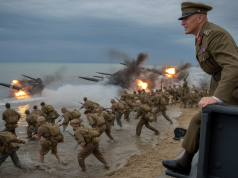Understanding Remembrance Sunday
Every year, on the second Sunday of November, countries across the world pause to honor the sacrifices made by their armed forces. In 2025, Remembrance Sunday falls on November 9, a day deeply etched in the hearts of many as a time to reflect on the bravery and selflessness of those who have served in the military.
The History Behind Remembrance Sunday
The origins of Remembrance Sunday can be traced back to the end of World War I. The war concluded on November 11, 1918, and the first observance was held in 1919. Over time, this day evolved into a broader recognition of all men and women who have served in the armed forces, not just those who fought in the Great War. The red poppy, inspired by the poem “In Flanders Fields,” became a symbol of remembrance, representing the blood shed during the war.
Significance of the Day
Remembrance Sunday is not just a day of mourning, but a celebration of courage and resilience. It serves as a reminder of the cost of freedom and the importance of peace. The day is marked with solemn ceremonies and gatherings, where individuals come together to remember, reflect, and honor the fallen. It’s a chance for communities to unite in gratitude, acknowledging the sacrifices made by veterans and active service members.
How is it Observed?
On Remembrance Sunday, people participate in various activities to honor those who have served. Here are a few common ways:
- Two Minutes Silence: At 11 AM, a two-minute silence is observed, allowing everyone to reflect on the sacrifices made by servicemen and women.
- Wreath Laying: Ceremonies often include the laying of wreaths at war memorials, symbolizing respect and remembrance.
- Poppy Wearing: Many wear red poppies as a sign of remembrance, with proceeds from the sales supporting veterans’ charities.
- Candle Lighting: Some individuals light candles in their homes, creating a warm atmosphere of reflection and remembrance.
Fun Facts About Remembrance Sunday
- The first Remembrance Day was observed at 11 AM on November 11, 1919, marking one year since the armistice.
- The Royal British Legion was established in 1921 and has been instrumental in the organization of Remembrance services ever since.
- In addition to poppies, other symbols of remembrance include the white poppy, which symbolizes peace, and the purple poppy, which honors the sacrifices of animals in war.
Join the Remembrance
This November 9, take a moment to remember and honor the sacrifices made for our freedom. Whether you attend a local service, wear a poppy, or simply reflect in silence, your participation matters. Let’s keep the spirit of remembrance alive, ensuring that the bravery of those who served is never forgotten. Share your own stories or thoughts about Remembrance Sunday in the comments below, and encourage others to join in this important observance.











